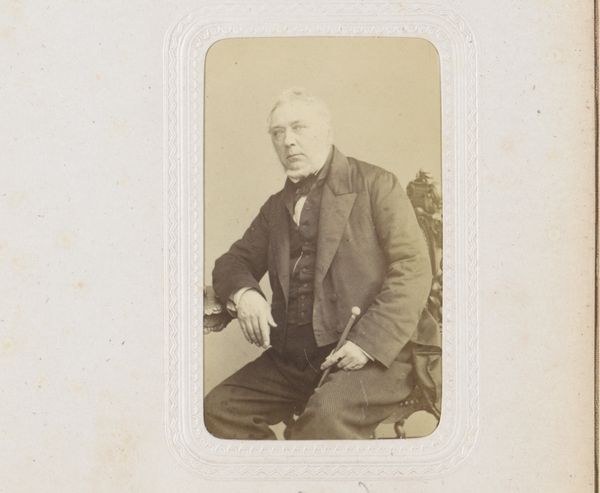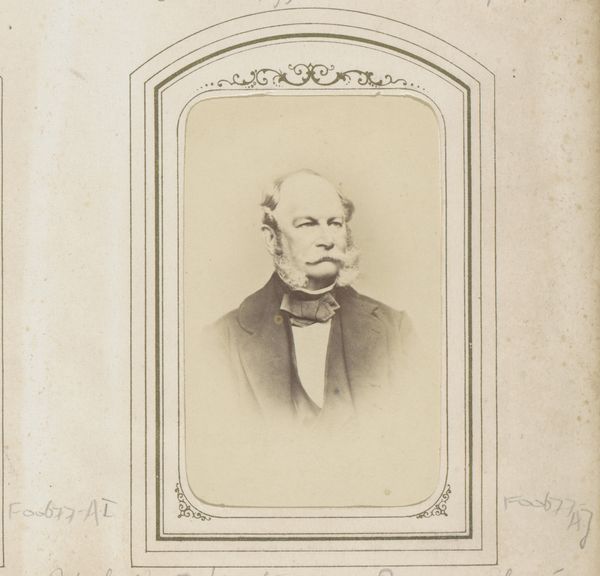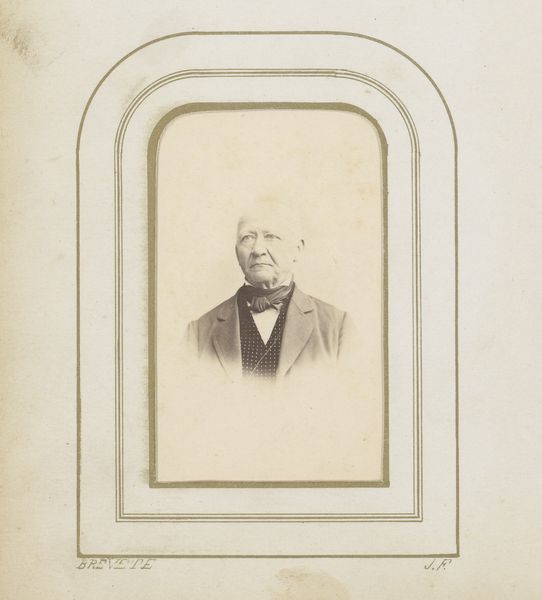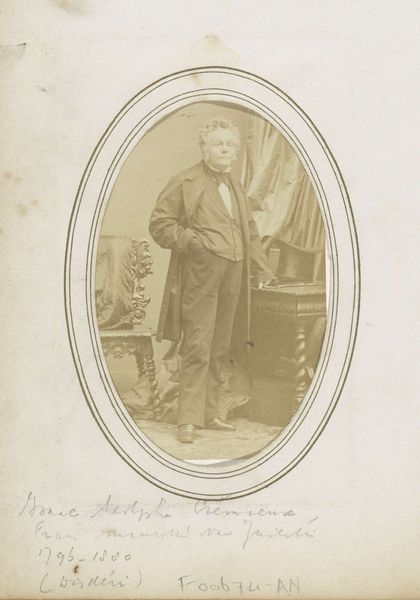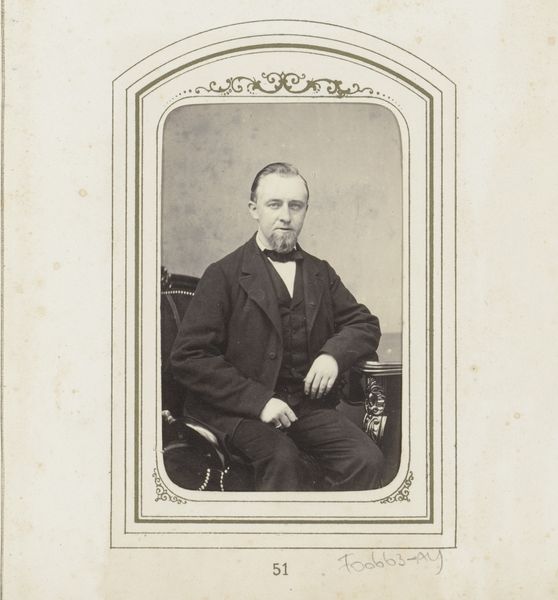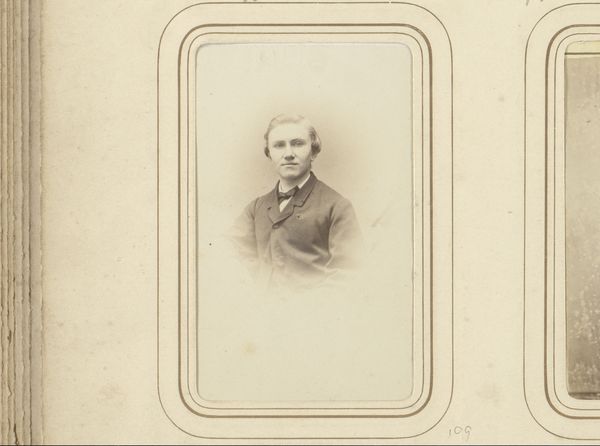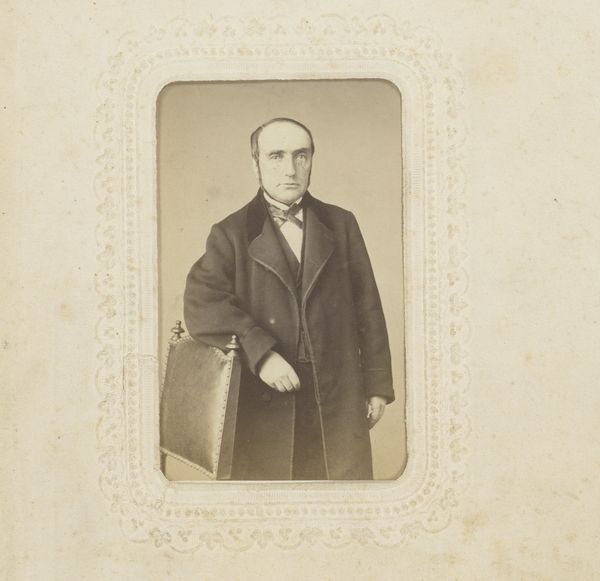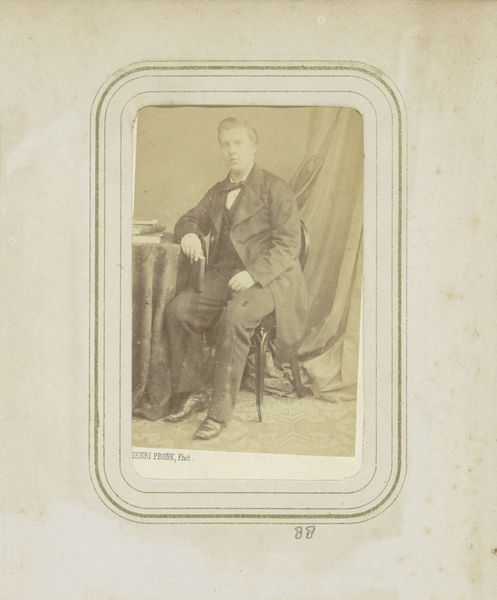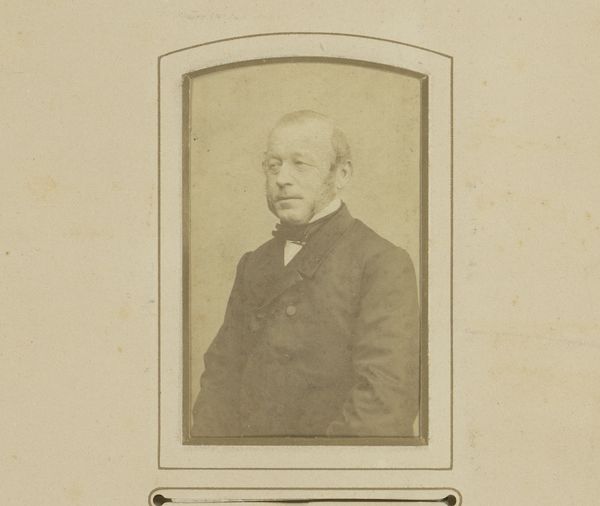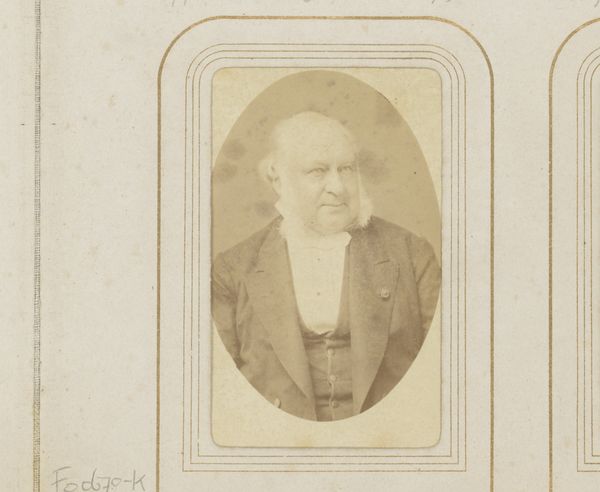
daguerreotype, photography
#
portrait
#
16_19th-century
#
daguerreotype
#
photography
#
realism
Dimensions: height 200 mm, width 153 mm
Copyright: Rijks Museum: Open Domain
Editor: This daguerreotype, "Portret van Hendrik Frederik August Sasse", was created sometime between 1855 and 1871. It's quite striking. It's almost unsettling how directly he looks at the viewer. How do you approach a portrait like this from a historical perspective? Curator: Well, daguerreotypes democratized portraiture to some extent, moving it beyond the realm of the wealthy elite who could afford painted portraits. Considering this is a portrait of Hendrik Frederik August Sasse, likely a man of some social standing, how does photography solidify or perhaps shift previous social hierarchies? Editor: That's interesting! I hadn't thought about photography as impacting social standing. The detail is amazing for such an old image. Do you think the commitment required of sitting still for the photograph changes the social dynamic between the sitter and the photographer, compared to painting? Curator: Absolutely. Consider the power dynamics at play: The sitter grants the photographer access to their image, yet the photographer controls the means of production. How do you interpret the almost formal rigidity of his pose within this emerging photographic culture? Does it speak to the newness of the technology, perhaps an attempt to emulate painted portraiture and retain a sense of established social decorum? Editor: It probably does! I’m starting to see how much of the context is crucial to understanding it. Curator: Precisely. Looking at a piece like this, we examine the social and cultural narratives surrounding it to better understand not just the individual, but the era itself. It makes you wonder about who was able to produce and who had access to these types of technologies, and how that changed perceptions and power over time. Editor: I now see so many different facets that I had initially overlooked, thank you. Curator: And that is the rewarding part about art: there is always a new lens through which to consider a work.
Comments
No comments
Be the first to comment and join the conversation on the ultimate creative platform.
